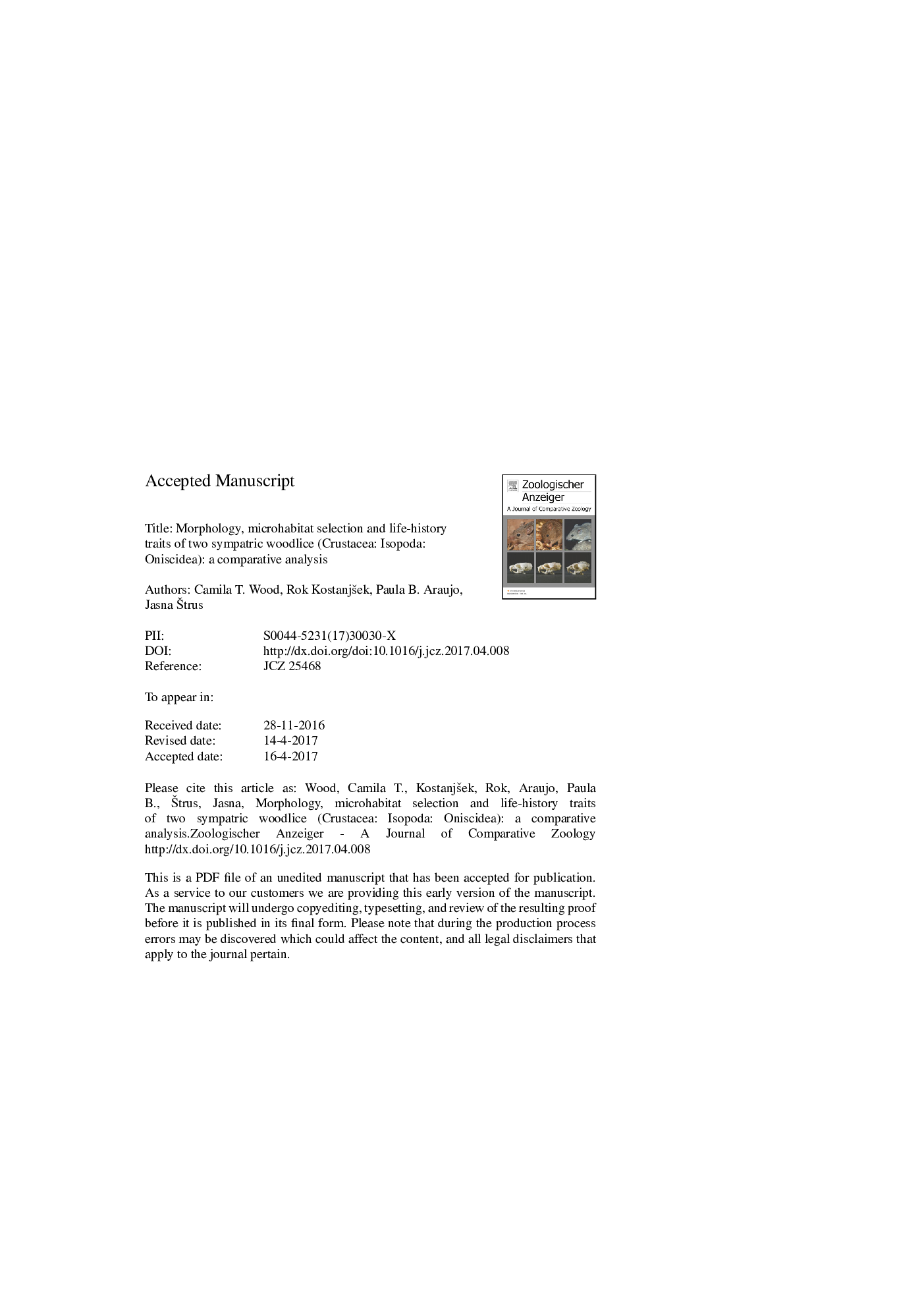| Article ID | Journal | Published Year | Pages | File Type |
|---|---|---|---|---|
| 5586470 | Zoologischer Anzeiger - A Journal of Comparative Zoology | 2017 | 35 Pages |
Abstract
The soil is a heterogeneous habitat with layers that differ in many aspects. Soil animals' morphological adaptations relate to specific microhabitat. We compared cuticle surface structures and ultrastructure of Balloniscus glaber (endogeic) and Atlantoscia floridana (epigeic) using microscopy techniques to understand how morphological characteristics allow sympatry. Species differed in scale and sensillum type and disposition, as well as cuticle thickness and layer proportion. Balloniscus glaber has curved scales and robust, caudally oriented sensilla that are most likely adaptive features for endogeic lifestyle. Its cuticle has high overall thickness and numerous stacks that provide toughness compatible with clinging strategy and higher tolerance to seasonal fluctuation. Atlantoscia floridana is an epigeic species with flat scales and long perpendicular sensilla, not adapted to the soil layer. Its delicate and flexible cuticle with thinner stacks makes it an agile runner although with lower tolerance to seasonal changes. Overall, differences in surface structure are related to microhabitat selection and ecological niche, so species can occur in same location. Differences in cuticle ultrastructure relate to behavioral strategies and environmental tolerance. This way, knowledge of species' ecology is complemented by morphological data that can help to explain habitat partition.
Related Topics
Life Sciences
Agricultural and Biological Sciences
Animal Science and Zoology
Authors
Camila T. Wood, Rok Kostanjšek, Paula B. Araujo, Jasna Štrus,
